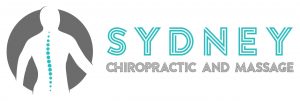How we stand, sit & move is key to having a strong, healthy and pain free back. There are several common types of postural distortions that may indicate muscle imbalances, which on its own; or more likely when combined with a lack of exercise, stress and even poor diet can be a major contributor to low back pain, sciatica, headaches, shoulder pain etc…
Over the years I have seen many weird & wonderful ways to ‘fix’ posture, some of which have merit but many that ignore the simple fact that it is the myofascial (muscles & fascia) system which hold you upright against gravity & need to be balanced & functioning adequately so they hold you in a balanced manner.
That’s why I combine chiropractic with myotherapy (SLM), SLM is a wholistic & corrective form of bodywork that restores length & function to your critical postural muscles so that your muscular system supports the chiropractic treatment of your spine & joints.
In this article I have linked some pictures which can help you self diagnose and the muscle’s that correspond to each imbalance, if you are currently getting treatment, you can see if these postural imbalances are being resolved, or simply look in the mirror if you see a raised/lower shoulder or a more prominent hip this is an overall indication of muscle imbalances.
Anterior/posterior tilt– This condition is sometimes humorously referred to as ‘Donald Duck butt’. In these cases, the pelvis is tilted forward and the back is pulled up and outward, resulting in a curve in the lower lumbar region. The importnt muscles are the muscle’s in front of the legs and pelvis namely the quadriceps & psoas. The opposite is true for a posterior tilt the arch is decreased and the hips are being pulled under. the important muscles are the hamstrings & glutes.
Rotation– In this condition, both sides of the pelvis will be rotated in the same direction – that is, either toward the left or the right. You can do a self-diagnosis by lying on your back with your legs straight and checking the direction in which your feet are pointing. In the case of a aligned pelvis, the feet should point in a 10 o’clock / 2 o’clock configuration. If a rotation is present, the feet will point in the same direction. In a left-rotated pelvis, both feet will point to the left. In a right-rotation, they will both point to the right. the important muscles are the hip external rotators mainly piriformis, quadratus femoris & obtrator internus. Internal roatators, glute medius/minimus & Tensor Fascia Lata.
Lateral tilt– In a lateral tilt condition, one side of the pelvis will be tilted downwards. This can manifest as one leg appearing shorter than the other and / or a noticeable difference in the height of the shoulders from each other. This condition can be self-diagnosed by looking in the mirror and noting if one side of the hips tilts downward, or if one shoulder is higher or lower than the other. Another method is to lie down with the legs straight and to ask someone else to check whether your ankle bones line up or not. If they are out of alignment, a lateral tilt may exist. The important muscles are hip adductors/abductors and quadratus lumborum.
Torsion– In some instances, patients present with a pelvic torsion – that is, not just one of the above conditions but a combination of two or more at the same time. This often occurs as a result of muscular imbalances in the back, pelvic area and legs. This is a relatively common problem and is usually best addressed by balancing all the muscles mentioned previously in this article.
Contact chiropractor Sydney.
Tags: posture, low back pain, muscle imbalances, chiropractor Sydney.

